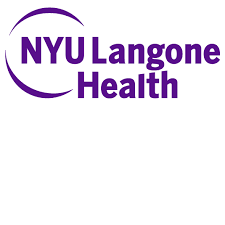 Supply Chain/Technology
Supply Chain/Technology
Fresh tools, talking points drive sharps safety culture shift

Takeaways • The prevalence of needlesticks and other sharp object injuries to OR team members is 42.8%, an increase of 16% over the past decade. • New research and perspectives are shaping the discourse around sharps safety, such as new and expanded evidence-based practices presented in AORN’s 2025 update to…
Capital funding crunch spurs creative hospital financing

Health systems are fundamentally capital intensive. They are regulated; depend on highly educated, high-cost employees; and operate under complex reimbursement structures. Investing in new technologies and infrastructure upgrades is imperative to keeping up with the latest medical advances. But what happens when capital funds are insufficient or no longer available?…
4 ways ASCs balance strict infection control, limited resources

Reduced costs, faster recovery, and other advantages can make outpatient surgical procedures more convenient for providers and patients alike. Ambulatory surgery centers (ASCs) are incredibly safe, but a lot of work goes into infection control. Cross-trained staff often wear many hats, and limited budgets may not leave room for dedicated…
Smart segregation, storage reduce biohazardous waste risks

From sharps and blood-soaked surgical instruments to discarded anesthetic agents, biohazardous waste from ORs can threaten human health and the environment. In addition, failure to adhere to regulatory requirements can result in significant fines. However, the volume and diversity of biohazardous waste can create challenges with managing this material. Mitigating…
Hospital’s anesthesia reforms slash carbon footprint, expenses

Editor's Note Universitätsmedizin Berlin reduced anesthesia-related carbon emissions by more than 80% since 2018 by eliminating high-impact anesthetic gases, implementing education initiatives, and revising clinical guidelines, according to a February 27 report in Medical Xpress. The hospital’s efforts targeted desflurane, an anesthetic gas with an extreme climate impact—nearly 8,000 times…
Study: Shifting imaging to outpatient centers could save billions

Editor's Note Moving radiology services from hospitals to outpatient centers could slash healthcare costs by billions annually while improving patient care, according to a March 3 Radiology Business News report on a study published in the American Journal of Roentgenology (AJR). The study found that shifting just 10% of hospital-based…
Report: Health system margins shrink as hospital revenue grows

Editor's Note Operating margins for health systems declined across the US in early 2025 even as hospitals reported steady revenue growth, according to a February 27 report from Strata Decision Technology. The median operating margin for U.S. health systems dropped to 1.0% in January, down from 2.1% in December, marking…
FDA announces Class 1 endovascular system, anesthesia system recalls

Editor's Note The US Food and Drug Administration (FDA) designated Getinge’s recall of Vaporizer Sevoflurane Maquet Filling and Sevoflurane Quick-Fil and Philips’ recall of Tack Endovascular Systems as Class 1s, the most severe category indicating serious risk of injury or death. The Getinge recall is an expansion of a 2024…
Real-time cancer detection improves brain surgery precision

Editor's Note A new genetic testing tool could allow surgeons to accurately identify cancer cells in real time during brain surgery, potentially improving surgical outcomes and reducing cancer recurrence, NYU Langone Health System announced. According to a February 25 press release, the Ultra-Rapid droplet digital PCR (UR-ddPCR) technique identifies cancer…
Research highlights anesthesia provider knowledge gap on drug, hormonal contraceptive interactions

Editor's Note Insufficient awareness of drug interactions with hormonal contraceptives (HCs) among anesthesia providers could lead to unintended pregnancies and preventable health consequences, according to survey published in Anesthesia & Analgesia. Physician’s Weekly covered the news February 27. The article specifically cites sugammedex and aprepitant, both of which are widely…

 Free Daily News
Free Daily News